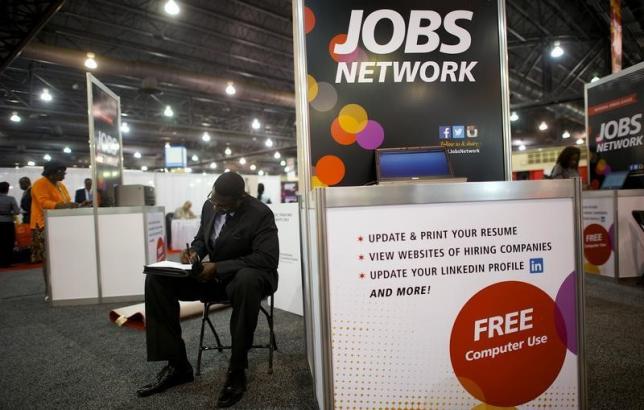US jobless claims, housing data point to firming economy

WASHINGTON - The number of Americans filing new applications for unemployment benefits fell more than expected last week and confidence among homebuilders held at a more than 9-1/2-year high in July, indicating underlying momentum in the economy.
The solid labor market and firming housing sector, underscored by Thursday's reports, suggest the economy likely is strong enough to support an interest rate hike this year. Manufacturing, however, continues to struggle.
"Overall, the economy continues to move in the right direction. We look for the Federal Reserve to hike rates twice before the end of the year beginning in September," said John Ryding, chief economist at RDQ Economics in New York.Fed Chair Janet Yellen told lawmakers on Wednesday that the US central bank remained on course to tighten monetary policy "at some point this year."
Initial claims for state unemployment benefits fell 15,000 to a seasonally adjusted 281,000 for the week ended July 11, the Labor Department reported. The decline reversed the prior week's rise and ended three straight weeks of increases.
Economists had forecast claims falling to 285,000 last week. While claims tend to be volatile during the summer when automakers normally shut assembly plants for annual retooling, a Labor Department official said there was nothing unusual in the state-level data.
Some automakers keep production running, which can throw off a model the government uses to smooth the data for seasonal fluctuations. The four-week moving average of claims, considered a better measure of labor market trends as it irons out week-to-week volatility, increased 3,250 to 282,500 last week.
It was the 16th straight week that the four-week moving average of claims held below 300,000, a threshold normally associated with a firming labor market.
The dollar rose against a basket of currencies, while prices for short-dated US government debt fell. Stocks on Wall Street were higher after Greece's Parliament voted to approve a new bailout program and Citigroup (C.N) reported its highest quarterly profit in eight years.
MANUFACTURING LAGS
The US labor market is tightening - the unemployment rate has dropped 4.7 percentage points from its peak in late 2009 to the current 5.3 percent, near the range that most Fed officials consider consistent with full employment.
Thursday's jobless claims report short showed the number of people still receiving benefits after an initial week of aid declined 112,000 to 2.22 million in the week ended July 4, suggesting some long-term unemployed were finding work.
The strong labor market is helping to prop up the housing market. A separate report showed the NAHB/Wells Fargo Housing Market index stood at 60 this month, the highest since November 2005.
That was unchanged from June's upwardly revised level, which was originally reported at 59. Readings above 50 indicate more builders view market conditions as favorable than poor. The index has not been below that level since June 2014.
Builders this month maintained their optimism about current and future sales, though a measure on prospective buyer traffic slipped from a five-month peak.
"This is more evidence that housing is strengthening," said Jim O'Sullivan, chief US economist at High Frequency Economics in Valhalla, New York.
But manufacturing continues to lag. In a third report, the Philadelphia Fed said its business activity index fell to 5.7 this month from a reading of 15.2 in June. A reading above zero indicates manufacturing expansion in the region, which covers eastern Pennsylvania, southern New Jersey and Delaware.
Manufacturing has been slammed by a stronger dollar and lower oil prices. The dollar has eroded the profits of multinational corporations while cheaper oil has undercut oil drilling activity, reducing investment spending in the energy sector.
"It adds to the disconcerting trend seen in other manufacturing sector indicators that have been consistently pointing to a lingering stagnation in US manufacturing sector activity," said Millan Mulraine, deputy chief economist at TD Securities in New York.
"While we believe that the dissipation of the various headwinds buffeting this sector should result in a meaningful rebound later this year, the timing of this seems farther into the horizon."
A gauge of new orders in the Philadelphia Fed survey fell sharply this month as did shipments. Inventories contracted and a measure of factory employment in the region was negative for the first time since January. -Reuters







